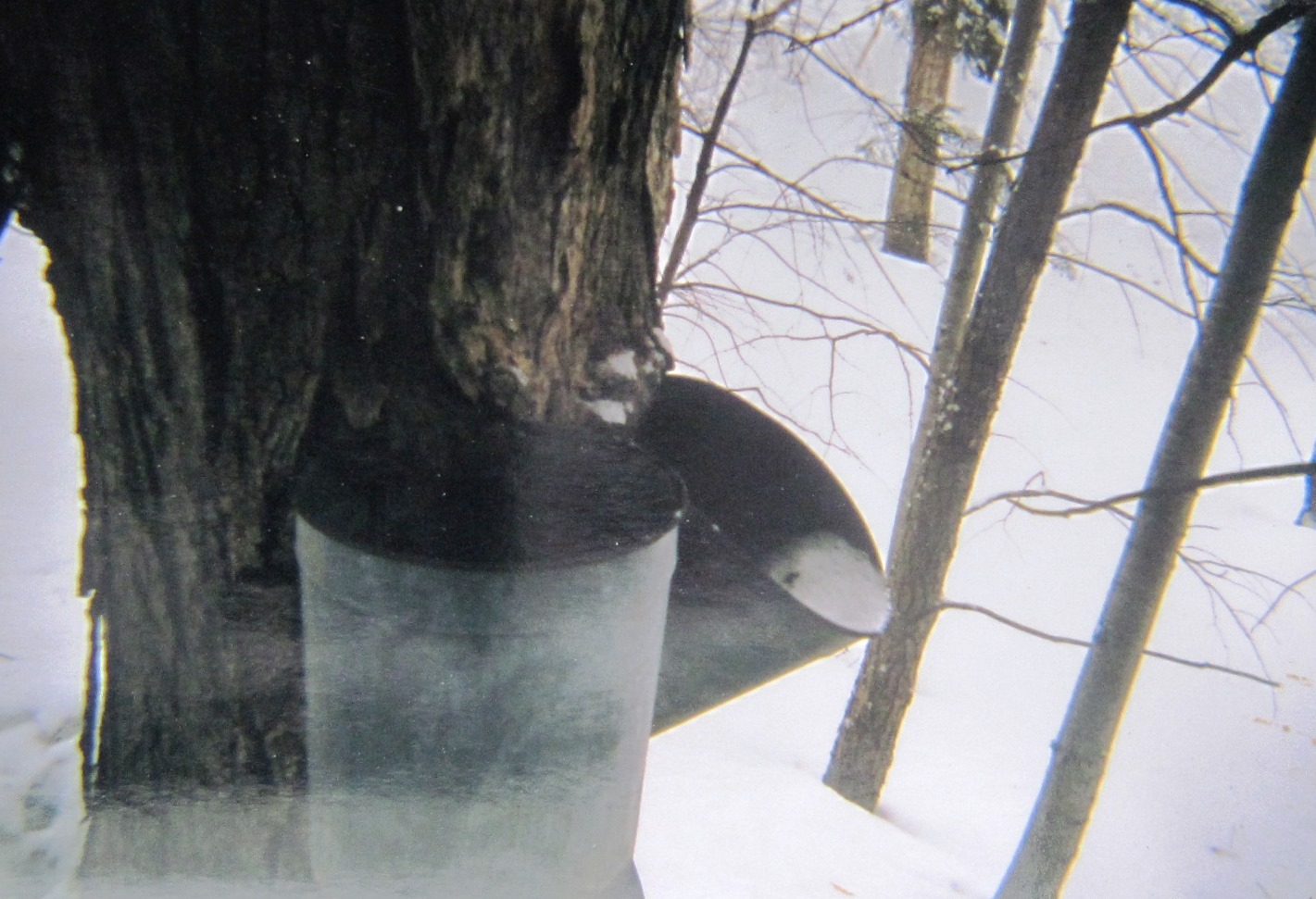
Linda Downing and I used to do a lot of hiking and snowshoeing up behind my place. Linda had a black lab, Mick. I had Hillary, a beagle-shepherd mix. The dogs got along well, Hillary the dominant.
Over the years, Linda and I developed several trails in the woods behind my place. Not far in the woods from my place was an old cabin and a pond. This was base camp when we were snowshoeing. We often made a day of it.
From here, our trail meandered up over a small ridge. On the backside of the ridge, at bottom, our trail came to a junction. As you approach the junction, an old stone wall took a sharp right-angle turn, down through the woods. The base of this corner wall was a ledge outcropping. It was solid.
We had a trail to the left that went through the woods to Don Farrar’s Crow Hill Farm. To the right, another trail went around the base of a steep and rugged ridge. This trail came out at the old Watkins place.
Another trail went up over this steep rugged ridge. It was a real workout in deep snow. I use my father’s 60-inch long wooden snowshoes. They were made by Tubb’s of Wallingford. I remember the day dad bought them. Near the top of the ridge was a stand of ironwoods. This was an enchanting location.
Linda had a pair of aluminum snowshoes. I called them flip-flops. They weren’t worth a tinker’s damn in the woods, or off a groomed trail, so I always broke trail.
At the top of this ridge was evidence that at one time this was farmland. There’s an old stone wall and overgrown pastures. It was a beautiful location. Linda and I would sit up against the wall and take in winter’s afternoon sun.
The sap buckets
If you went down the backside of this ridge, there was mixed hardwoods. It was about 25 years ago Linda and I were exploring the backside of this ridge, when we spotted the sap buckets you see with this article.
In those days, I took photos not knowing I would ever need them. I have since learned some about photography from Tom Hildreth. What I’m getting at is this photo could be a lot better, if I knew then what I know now.
I have seen barbwire that has grown into a tree, or the white porcelain knobs used with electric fences the same way. But I had never seen sap buckets. For some reason, these galvanized buckets were never retrieved. As years went by, the steel sap spout had been grown over by the tree.
As Linda and I looked the tree over, we noticed the tree now had begun swallowing the buckets. The bottoms of the buckets had long rusted out.
My mind went to a logger who, with his chainsaw, laid into a hidden steel sap spout. I know the damage this would do to the chain of a chainsaw. Imagine it escaped the chainsaw, and went to a sawmill. The large diameter saw blade would be ruined when it hit the sap spout.
Or maybe the log makes its way to a wood processor. You know, the people who deliver your firewood. Once again, it would be ruinous.
It’s been a number of years since I have visited this location. I remember it was logged after I took this photo. I don’t know if this tree still stands.
The cabin
Steve Pixley owned the land and cabin. Linda and I kept the roof shoveled off. There was a good-sized stone fireplace inside. We would start a fire in the fireplace. With the tops of andirons in the front and a rock in the rear, we set a cast iron oven rack from an old woodstove above the fire’s coals. We roasted potatoes and chicken on the iron rack. While we waited for everything to cook, we made coffee or hot chocolate with peppermint schnapps.
This week’s old saying: “I seldom do what I’m asked, and never what I’m told.”